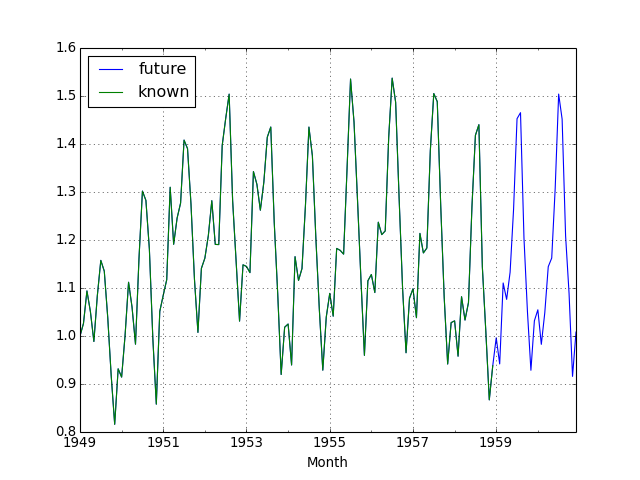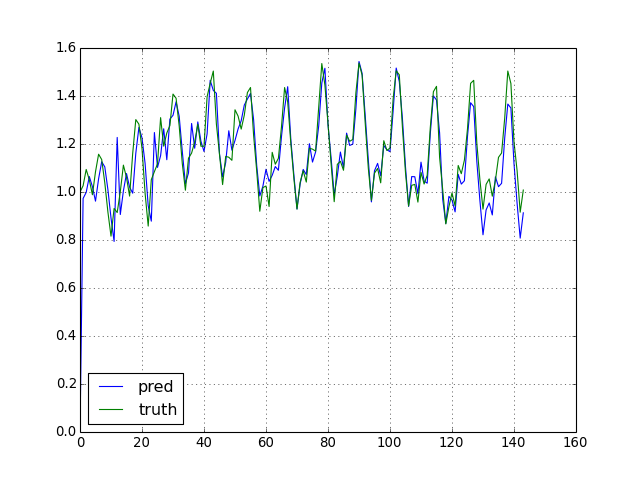Forecast with Horizon¶
In chapter Estimation of Parameters only one-step ahead predictions were applied. So in our example of monthly data, all data up to the last month was used to predict the number of passengers in the current month. This is possible up to the last date with the known truth.
In order to do forecasts beyond the period where all data is available, we can
provide a horizon to the forecast function. The horizon
specifies the number of one-step ahead predictions that should be done after
the last known data point.
To illustrate this, we take the same example as in the last chapter and remove the last two years from the data:
from pydse import data
from pydse.arma import ARMA
from pydse.utils import make_lag_arr
import pandas as pd
from pandas.stats.moments import rolling_mean
df = data.airline_passengers()
df['Trend'] = rolling_mean(df['Passengers'], window=36, min_periods=1)
residual_all = df['Passengers'] / df['Trend']
residual_known = residual_all[:-24]
pd.DataFrame({'future': residual_all, 'known': residual_known}).plot()
(Source code, png, hires.png, pdf)

Now, we fit an ARMA model with the known data and forecast the following two years after the known time period:
arma = ARMA(A=make_lag_arr([1, 12, 13]), B=make_lag_arr([12]), rand_state=0)
arma.fix_constants()
arma.est_params(residual_known)
pred = arma.forecast(residual_known, horizon=24)
result = pd.DataFrame({'pred': pred[:, 0], 'truth': residual_all.values})
result.plot()
(Source code, png, hires.png, pdf)

By eye, it can be seen that our predictions are still quite accurate but not as good as using one-step ahead predictions with data up to the previous month.